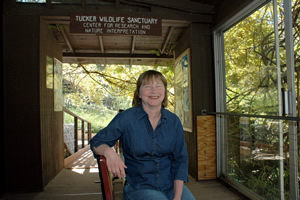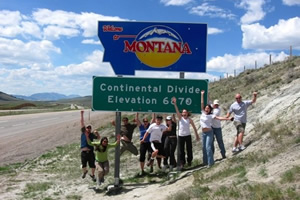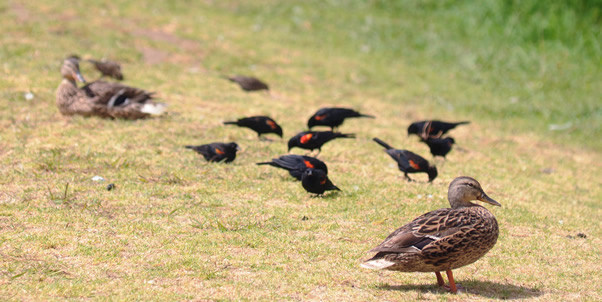Expanding Research Opportunities
College Provides Specialized Facilities from the Mountains to the Sea
September 22, 2009
By Russ L. Hudson
In its mission to offer the best undergraduate research experience that it could for its students, the College of Natural Sciences and Mathematics’ earliest faculty looked for ways to expand the opportunities for scientific investigation. They sought the best opportunities available for the students to learn, regardless of location, then found ways to develop the facilities to enable it. Sometimes the campus found volunteers to help accomplish the task and sometimes partners.
What they found worked so well that researchers around the globe, not just CSUF students, have benefited from their efforts.

Marcella Gilchrist, on-site director of Tucker Wildlife Sanctuary, on the bird observation porch. Photo by Patrick O'Donnell
Tucker Wildlife Sanctuary: Less than 10 years after the first classes were held, NSM added the Tucker Wildlife Sanctuary in Modjeska Canyon to its facilities. Donated to the university by the San Fernando Valley Audubon Society in 1968, the 12-acre sanctuary serves the dual purpose of supporting research efforts by CSUF students and researchers worldwide, and is a preserve for native habitat and wildlife. With an on-site manager and both paid and volunteer staff, the center has been the site of countless student biology research projects, including detailed grid mapping of the flora and fauna. Monitoring of habitat recovery began after the devastating fires that nearly overwhelmed the facility in October 2007.
Ocean Studies Institute/Southern California Marine Institute: In 1969, CSUF helped organize a consortium of six California State University campuses in what is now called the Ocean Studies Institute/Southern California Marine Institute on Terminal Island. Docked there are the 65-foot Sea Watch and 76-foot Yellowfin research vessels. Between them, they can carry up to 10 crew and 80 researchers on short voyages. Overnight trips can accommodate 22. OSI/SCMI’s Wrigley Institute for Environmental Studies on Santa Catalina Island includes eight laboratories that can accommodate up to 65 guests and host live-in, semester long educational and research courses for visiting students.
Western Field Camp: The college’s department of geological sciences established a field camp near Dillon, Mont., which is co-administered and staffed by the University of Montana, Western. The dormitory-style camp is a base for Fullerton junior and senior geological science majors to study the geology of the western United States each summer.

Students celebrate reaching the Continental Divide on their way to the CSUF Department of Geological Sciences Western Field Camp in Dillon, Mont.
The Fullerton Arboretum: The 26-acre Fullerton Arboretum opened in 1979. The city of Fullerton, which provided crucial funding and expertise in the early years, and NSM share administration. The arboretum offers opportunities for ecological and horticultural studies.
The Biological Sciences Greenhouse Complex: The Biological Sciences Greenhouse Complex opened in 1971. Its two research greenhouses and four isolation rooms are designed to support experimental plantings by greenhouse staff, Fullerton students or visiting researchers that cannot be contaminated by other vegetation or insects. A wide spectrum of unusual flowers and plants from around the world are cultivated by Ed Read, greenhouse manager and instructional support technician. The greenhouse exchanges samples of plants with other institutions.
The constant quest for more and better places to practice science as a way to enhance research is a the legacy of the early faculty.


